Short profiles of SARE-funded research and education projects in action.
Showing 1-20 of 43 results

The Value of Farming with Community
Shakera and Juan Raygoza talk about why their bonds with local consumers, families, schools, agricultural educators and other farmers are beneficial for both them and for the community where they live and farm. They operate Terra Preta Farm on 15 acres in Edinburg, Texas, where they grow organic radishes for wholesale markets and run a […]

Using Flowering Insectary Borders to Boost Natural Enemies
Beneficial insects play an important role in managing insect pests and pollinating crops, but they struggle to thrive in and around farms that have low plant diversity and rely mainly on tillage. Routine soil disturbances and low plant diversity can mean fewer prey, shelter and plant-based resources available to support natural enemies, especially early in […]
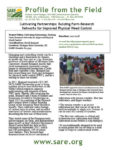
Cultivating Partnerships: Building Farm-Research Networks for Improved Physical Weed Control
Managing and controlling weeds can be a challenge and a frustration for farmers, no matter the farm size or crop. Associate professor of horticulture at Michigan State University, Daniel Brainard, knows that weed management represents a major barrier to sustainable production of both field and vegetable crops. Brainard has been researching new tools and techniques […]
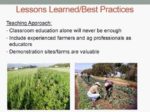
Supporting Farmer Training Programs in the West
“When I finally came (to ALBA’s Farmer Education Program), I learned so much! How to eat differently, how to plant without pesticides, how to harvest, move the boxes, move the product in the system.” -Maria Ana Reyes, 2015 graduate of ALBA’s Farmer Education Course. Like Maria Ana Reyes, new and beginning farmers often need technical […]
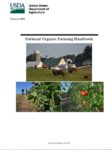
Growing the Field for Organic Conservation
As producers work to meet regulations under the National Organic Program (NOP) and become certified organic, they often apply conservation practices that align well with the Natural Resources Conservation Service’s (NRCS) conservation activities, such as green manures, buffer strips, and rotational grazing. NRCS assistance is being sought by both new and established organic farmers to […]

Climate-Sustaining Agriculture
Often, farmers are willing to make changes in their growing practices to reduce their greenhouse gas (GHG) emissions and their climate impact. Whether conventional or organic, agriculture can be a source of GHG emissions. Those farmers eager to modify their practices may lack the knowledge and tools to make effective choices. According to graduate student […]
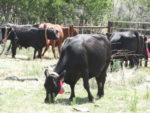
Researchers Say Hill-Climbing Cows May Bring Big Benefits for Western Ranchers
Conventional wisdom says cows don’t go up steep slopes. They don’t climb hills and don’t travel very far from water. But some cows never got that memo. “I’ve been watching cattle for years, and there are always some cows that just take off for the hills, like they didn’t know they weren’t elk,” said Derek […]
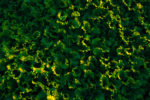
Vegetable and Weed Degree-day Models
Pest managers are familiar with the concept of using degree days to predict pest outbreaks. Insects, like many other organisms, develop according to the temperature around them and degree days are a way to measure accumulated temperature. Plants – at least in part – also develop based on temperature, so a team in Oregon is […]
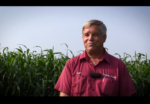
Innovative Assessment Helps Farmers in the Northeast Improve Soil Health
Improving soil health without understanding the soil's condition is not easy and traditional soil tests, though important management tools, don't provide information on the physical structure or microbial life living in the soil. That is why a multidisciplinary team at Cornell University created a soil health assessment, which measures physical, chemical and biological indicators as […]

Integrating Traditional Foods with Aquaponics in the Desert Southwest
The Challenge Cochise County, Arizona, where Aaron Cardona’s Arevalos Farm is located, is classified by the USDA as a food desert with high poverty rates, as well as high rates of diabetes and obesity. To help confront these problems, Cardona decided to look into aquaponics, which had not been experimented with in the desert regions […]
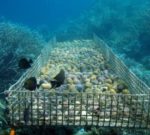
Training in Marine Ornamental Farming for Extension Professionals in Micronesia
The Challenge The Federated States of Micronesia (FSM) and the Republic of the Marshall Islands (RMI) are fledgling sovereign nations. Both nations have low per capita GDP and high unemployment. Like many developing small island nations, the FSM and RMI are economically marginalized. The people of FSM and RMI have skills and resources for aquaculture, […]
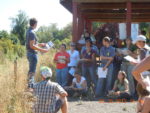
Western Pollinator Conservation Planning Short Course
The Challenge Hives of European honeybees, commonly purchased for pollination services, have become more difficult to obtain due to decline from disease and Colony Collapse Disorder (CCD). Native bees can make a significant contribution to crop pollination. Protecting, enhancing, or providing natural habitat on farms is the best way to conserve native pollinators. The USDA, […]
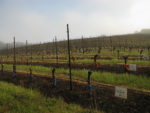
Water Management in Sonoma County Grape Production
The Challenge As in all of California, water is a scarce resource in Sonoma County, a region in Northern California with more than 400 wineries and almost 60,000 acres of vineyards. Wine grape growers face increasing competition for water from different interests, various regulations, and a need to protect threatened and endangered salmonids found in […]

Raising Locally-Adapted and Disease Resistant Queens in Illinois
It is no secret that we are losing bees at higher rates than ever before: On average, beekeepers lose 33 percent of their hives each year. This unfortunate occurrence is known as Colony Collapse Disorder, caused by many different factors such as disease, the varroa mite, pesticide poisoning and habitat loss. And while most […]

Integrated Pest Management in Alabama
Organic vegetable growers in the Deep South face a constant battle with pests. In Alabama, new information is leading to better crop protection and more profitability, thanks to the work of Ayanava Majumdar, Alabama Extension entomologist and Southern SARE state coordinator. As a SARE state coordinator, Majumdar is tasked with bringing sustainable agriculture information […]

Improving Nutrient Use Efficiency in Montana Wheat
"This was a landmark study because we knew we were losing nitrogen, we just didn't know how we were losing it," says farmer Curtis Hershberger. When nitrogen fertilizers are applied to the soil surface using certain application practices, a significant amount can be lost when the nitrogen converts to ammonia gas and enters the atmosphere. […]
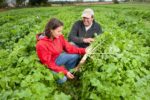
For Vegetable Farmers, a New No-Till Tool in Forage Radish
Vegetable farmers who want the myriad benefits of winter cover crops may be setting themselves up for a hectic spring schedule, when the challenge of planting during a narrow window of good weather becomes more complicated by the need to first terminate that winter crop. To make their lives a little easier, University of Maryland […]
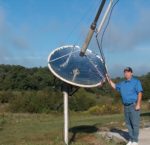
From Fruit to Fuel
As tree fruit growers know well, annual harvests do not remove all the fruit from the orchard. A great deal is left behind littering the orchard floor. While pondering his fruit waste problem, Dan West of Macon, Mo., who grows apples, peaches, apricots, nectarines, plums and pears, hit upon a novel approach: Why not turn […]
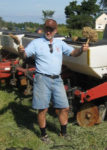
No-Till and Cover Crop Innovations Increase Dairy Profits
Summertime for dairy farmers in New England is anything but slow. Silage corn must be planted and harvested in a short window to provide high-quality forage for cattle, leaving little time to plant cover crops to replenish the soil. Under pressure to get corn planted early, farmers may delay the first cutting of hay, sacrificing […]
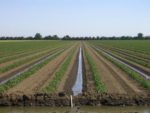
Water Use Efficiency in Tomatoes
University of California at Davis graduate student Felipe Barrios-Masias and Professor Louise Jackson saw promise in alternative irrigation methods that could use less water but still produce high yields, leading to increased agricultural sustainability and efficiency. Until successfully obtaining Western SARE funds, they were finding it difficult to receive funding for the on-farm research. However, […]